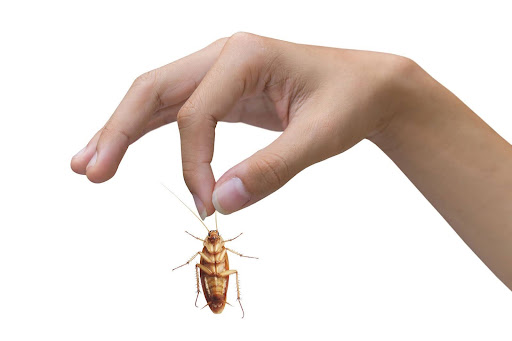Pests may be small, but the problems they bring to you can feel enormous. Whether it’s rodents sneaking into your attic or ants boldly invading your pantry, no person ever wants to deal with the havoc pests can wreak.
That’s where pest exclusion comes in—an often-overlooked but incredibly effective method for keeping these unwelcome visitors at bay.
At Kanga Pest Control, we’re not just interested in getting rid of pests. We’re interested in keeping them away for good. Operating across the Pacific Northwest, we use proven pest exclusion techniques that protect homes and businesses from infestations while saving owners time and money.
What Is Pest Exclusion?

Pest exclusion is a preventive, non-chemical strategy designed to keep pests out before they can become a problem.
If pest control is about battling an infestation, pest exclusion is about stopping one before it even starts. It focuses on identifying and sealing entry points, eliminating attractants in and around your property, and creating barriers that make it impossible for pests to gain access.
Think of it like locking your doors before bedtime—not waiting until someone tries to break in to take action instead. With pest exclusion, you can prevent the usual suspects—like mice, rats, ants, and spiders—from becoming long-term houseguests.
Unlike traps or fumigation, pest exclusion is part of an integrated pest management (IPM) approach. This method relies on understanding pest behavior, habits, and their most likely access points to eliminate vulnerabilities in your building. Done right, it’s not just a quick fix; it’s a long-lasting solution.
How Pest Exclusion Protects Your Home or Business

When pests enter your property, they don’t just stop at simply being annoying. Rodents chew through wires, creating fire risks. Carpenter ants and termites weaken wooden structures, damaging the integrity of your house. Cockroaches and rodents contaminate food and spread diseases.
Pest exclusion prevents these risks by addressing your home or business’s entry points, weakened structures, and conditions that attract pests.
In practice, there are three key areas we tend to focus on as part of our pest exclusion efforts:
1. Sealing Entry Points
Pests are resourceful—they’ll exploit the tiniest cracks, gaps, and openings to get inside. Sealing up these entry points is step one in effective pest exclusion. For example, gaps beneath doors are easy invites for rodents, while unsealed utility pipes often serve as highways for bugs.
At Kanga, we use durable, pest-proof materials like caulk, wire mesh, and weatherstripping to close off these vulnerabilities.
2. Blocking the Path to Food and Shelter
Why do pests invade homes or businesses? Two reasons—food and shelter. By focusing on areas like kitchens, basements, and storage zones, we eliminate the environment pests crave. Simple fixes, like securing trash bins tightly or keeping pet food stored away at night, can go a long way.
3. Reinforcing Structures
Sometimes, minor maintenance issues can leave your building wide open to pests. Loose vents, damaged screens, or missing roof shingles—all common in the Pacific Northwest’s damp climate—become easy entry points.
We’ll check for structural weak spots and recommend adjustments not just to keep pests out, but to protect your property from future damage.
Why Choose Kanga Pest Control for Pest Exclusion?

Not all pest control companies are created equal. At Kanga, we don’t take a one-size-fits-all approach to pest exclusion. Every property is unique, and so are the pest challenges it faces. This is where our expertise truly shines.
We start with a thorough inspection, scouring every inch of your property for potential entry points and other vulnerabilities.
Our team is trained to think like the pests themselves—identifying weaknesses you may not even notice. After sealing entryways and addressing other issues, we continue to monitor your home to ensure our measures are effective and long-lasting.
Operating in the Pacific Northwest means we’re deeply familiar with regional pest challenges. Whether it’s keeping spiders from slipping through unsealed windows or stopping raccoons from nesting in attics, we’re equipped to handle them all.
Plus, we take pride in using environmentally responsible products and methods. Pest exclusion is a natural extension of that ethos, as it’s largely non-invasive, long-term, and chemical-free.
Long-Term Benefits of Pest Exclusion
The benefits of pest exclusion go beyond simply keeping your home or business pest-free. Here’s why so many people consider it an essential investment:
- It Saves Money: Regular pest infestations can require costly extermination treatments, and repairing damage caused by pests—like chewed wires or weakened wood—can add up. Pest exclusion prevents these expenses before they happen.
- It Safeguards Health: Avoid potential exposure to diseases carried by pests, such as salmonella, hantavirus, or Lyme disease. Keeping pests out means you’ll have a safer space for you and your family.
- It’s Environmentally Friendly: This method minimizes the use of chemical pesticides, supporting a healthier environment for your living space and for the surrounding ecosystem.
- It Provides Peace of Mind: Knowing your home or business is pest-proofed gives you one less thing to worry about during your day-to-day life.
Say Goodbye to Pests in the Pacific Northwest: Trust Kanga
In the Pacific Northwest, we face unique challenges when it comes to pest control. The region’s rainy weather attracts moisture-loving pests aplenty, from ants to spiders to rodents seeking shelter from the damp.
We don’t just fix problems. We anticipate them. That’s the difference Kanga brings to pest exclusion.
You deserve a home or business that’s free from crawling, buzzing, or scuttling intrusions. Pest exclusion is your best first step to making that a reality, and Kanga Pest Control is here to help.
Don’t wait for an infestation to take action. Give us a call at Kanga Pest Control in Canby, Oregon and schedule your pest exclusion assessment today.
Because when it comes to protecting your home, an ounce of prevention is worth far more than a pound of cure.
